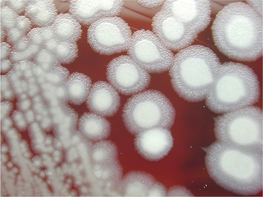Y
Y chemical symbol, yttrium.; symbol for yotta.
Y-linked inheritance inheritance determined by loci on the Y chromosome.
yabapoxvirus [yab′ –poks″] a poxvirus of African nonhuman primates.
–poks″] a poxvirus of African nonhuman primates.
yabby, yabbie Australian term for Cherax destructor (freshwater crayfish).
Yabila grass see Panicum queenslandicum.
YAC yeast artificial chromosome.
Yangtze River fever schistosomiasis.
yard 1. a unit of linear measure, 3 feet, or 36 inches, equivalent to 86.44 cm. See also Table 2.5. 2. a small fenced enclosure called also corral. 3. in the UK is synonymous with feedlot. 4. to enclose animals in a small enclosure.
yardage fee charged each day cattle are in a feed yard.
Yb chemical symbol, ytterbium.
yearling an animal in its second year of age, e.g. yearling cattle, yearling filly, yearling colt.
y. disease rinderpest in wildebeeste in the Serengheti.
avian gastric y. Macrorhabdus ornithogaster; see megabacteriosis.
selenium y. selenium-enriched yeast; common form of selenium used to supplement the dietary intake.
yellow body see corpus luteum.
yellow calf see copper nutritional deficiency.
yellow dog tick see Haemaphysalis leachi leachi.
yellow drumsticks see Craspedia chrysantha.
yellow lotion a devilishly ingenious way of marketing white lotion by including a yellow pigment.
yellow oxide see mercuric oxide.
yellow pop flower see Glishrocaryon.
yellow rice discolored grain caused by contamination with the fungus Penicillium citreo-viride.
yellow vine see Tribulus micrococcus.
yellow-wood see Terminalia oblongata subsp. oblongata.
yellows enterotoxemic jaundice in lambs, caused by Clostridium perfringens, type A.
yellowses hepatic injury caused by poisoning by Narthecium ossifragum.
yerba-de-pasmo Baccharis pteronioides.
Y. pestis causes bubonic plague in humans and sylvatic plague in rodents and cats.
< div class='tao-gold-member'>
 t] stinging wasps in the family Vespidae, genera Vespula and Dolichovespula; often confused with hornets in the US and generally known as wasps in other countries.
t] stinging wasps in the family Vespidae, genera Vespula and Dolichovespula; often confused with hornets in the US and generally known as wasps in other countries.



